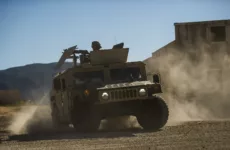In a perfect world there would be no need for soldiers to go abroad or fight at all, in a real world, however, there are thousands of active duty soldiers from all countries deployed at any given time. As such, many of these brave men and women are not able to get the prompt and efficient medical care that they would if they were on base or if they were at home near a typical hospital.
New Technology
It is crucial, not only for these soldiers that may be experiencing battlefield wounds but also for their families that new technology is developed to help bring more men and women home safely after battlefield injury than ever before. In an article on healthline.com, freeze-dried plasma is the topic of discussion.
In recent years this freeze-dried plasma was stored in glass bottles then reconstituted on site as needed by army doctors. Though the current freeze-dried plasma operation does save hundreds of lives every year on the battlefield, glass bottles are heavy, they are easily damaged if not properly transported and the reconstitution process is sometimes hazardous if not completed properly.
The new technology that was proposed and rush approved by the FDA would allow the plasma to be transferred in plastic bags that are state of the art and light so they are easy to carry. The bags would use standard fluid transfer instead of the reconstitution process and would allow for sterile water to mix with the plasma making injection possible.
What Does this Mean for Battlefield Treatment?
This has some serious positive connotations for the military in that it would allow for easy transport and carrying of the much-needed plasma, it would allow for easier mixing and preparation of the plasma for injection, and it would allow for faster treatment, all of which are essential when it comes to the proper treatment of injured soldiers on the battlefield.
In many cases, the need for treatment is urgent and does not allow for the long thawing process and mixing process that is needed for traditional freeze-dried plasma applications. The new technology would allow doctors to treat soldiers faster allowing for potential lives to be saved that would have otherwise been sacrificed.
Though the technology is still young, it has been approved by the FDA which means that the government has the green light to begin developing this technology in mass quantities to be distributed and used on the battlefield.
The new packaging would allow the blood to be stabilized and essentially dried out so that it can be transported with little special care being taken. This means that the blood would be stable and would be able to be transported so that it could later be applied with no special transportation being needed and with no special mixing or spiking processes needed to make the blood usable. This would allow for the blood to be mixed as needed to preserve it longer and to make administration far simpler.
Civilian Use
It is also possible that this technology may have a civilian application once it has been fully tested, vetted, and once it has been cleared. This new technology would be useful for emergency workers and would be able to be transported safely on ambulances and other emergency vehicles so that it could be administered to patients on the way to the hospital. This new technology is still in the beginning stages but would certainly be a plus for any emergency services.








